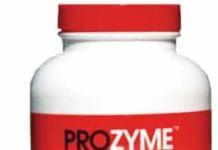Dogs with the MDR1 Mutation: Drug Sensitivities
Most dog owners are aware that Collies and other herding breeds may be sensitive to ivermectin, used for heartworm prevention and to treat certain parasites. But did you know that these dogs can also be sensitive to a number of other drugs, and that other breeds can also be affected?
Best Treatment Options for Canine Lipomas
Uh-oh. What’s this lump? Any growth on your dog’s body deserves attention, especially one that wasn’t there last time you checked. It could be a sebaceous cyst (a sac filled with sebum, a cheesy or oily material, caused by clogged oil glands in the skin), an abscess (a pus-filled swelling caused by infection), or – everyone’s worst nightmare – a cancerous tumor. But in most cases, the lumps we discover as we pet and groom our dogs are lipomas, which are benign (non-cancerous) fat deposits, also known as fatty tumors. An estimated 1.7 million dogs are treated in the United States for lipomas every year, and according to one survey, American veterinarians average 25 lipoma removals annually at a cost to owners of $635 million. Lipomas tend to emerge as dogs reach middle age and increase in number as dogs get older. A dog with one lipoma is likely to get more. Lipomas are most often found on the chest, abdomen, legs, or armpits (axillae). These fatty lumps aren’t painful and they usually stay in one place without invading surrounding tissue.
Older Dogs and Surgery
Some are reluctant to perform surgery on old dogs because of anesthesia risks or complications, but these risks are minimal in the case of most lipomas. Modern anesthesia protocols are far safer than they used to be, and complications are generally minor, usually limited to superficial infection or delayed healing. There is no reason not to remove lipomas from older dogs when they interfere with their quality of life.
Novartis Brand Canine Drug Shortages Continue
Novartis Animal Health suspended production at its Lincoln, Nebraska, plant in December 2011 following a series of warnings from the U.S. Food and Drug Administration (FDA) regarding manufacturing and quality control violations. At that time, the only veterinary drugs affected were the heartworm and flea products Interceptor, Program, and Sentinel. Novartis said it hoped to return to full production in January. Instead, further problems were discovered when Novartis warned veterinarians about possible tablet mix-ups in bottles of Clomicalm, used to treat separation anxiety. On January 5th, Novartis sent a letter to veterinarians informing them that it was suspending production and shipments of Clomicalm and Milbemite (used to treat ear mites) in addition to the products listed above.
How to Get Your Dog to Take His Pills
My Border Collie Daisy trained for the world record in the hack put" event. This soon-to-be Olympic sport involves hacking pills from the back of the throat as far as possible across the room. Her record is 1.2 meters
Properly Diagnosing Canine Hypothyroidism – What are the Signs?
You probably know someone with an underactive thyroid gland; in fact, you may have one yourself. The signs of hypothyroidism in humans include a subnormal body temperature, cold hands and feet, weight gain, hair loss, and constant fatigue. People aren’t the only ones afflicted by this disorder, for many dogs are hypothyroid, too. They may seem lethargic, gain weight while eating normal or below-normal amounts of food, seek warmth, and develop skin and coat conditions. But hypothyroidism causes other symptoms, too, and an accurate diagnosis can require thinking outside the box.
When to Seek Veterinary Care After Your Dog Has a Close Call at the...
Did Your Dog Have a Scary, Sinking Moment in the Water? “If the dog comes out and he’s fine, he’ll shake it off,” says Jules Benson, DVM. “You need to watch him for the next 24 to 48 hours, because that’s when aspiration pneumonia (caused by water going down into the main-stem bronchi) can occur. Especially if it’s water other than a pool, where there could be bacteria or protozoa in the water. If they aspirate any of that and it goes into the lungs, the bacteria spreads and multiplies.
Proteolytic Enzymes – Natural Pain Relief for Dogs
Enzymes given with food are used for digestion, but certain enzymes (proteases, which break down proteins) can also help with inflammation, pain, recovery from injury, and more when given apart from food. Systemic enzyme therapy, also called metabolic or proteolytic enzyme therapy, allows enzymes to enter the body where they can be used for healing rather than digestion. Examples of proteolytic enzymes include pancreatin, trypsin, and chymotrypsin (from the pancreas); bromelain (from pineapple); and papain (from papaya).
Help Manage Your Dog’s Diabetes Through Proper Diet
There is no single “best” diet for dogs with diabetes. Most diabetic dogs do fine on a diet formulated for adult maintenance. And most do not require a high-fiber prescription diet. However, it is important to maintain consistent carbohydrate levels, and a diet moderately low in fat may be safest. The nutritional needs of any concurrent disease should take precedence.Dogs with diabetes can thrive on diets that are dry or canned, prescription, frozen raw, home-prepared (cooked or raw), and combinations of any of these. See the samples below (starting with “Prescription Diets”) for a variety of diets that have worked well for diabetic dogs and their caregivers. We’ll say it again: There is no single “best” diet for dogs with diabetes. Most diabetic dogs do fine on a diet formulated for adult maintenance. And most do not require a high-fiber prescription diet.
Hazards of Hypoglycemia (Low Blood Sugar)
Hypoglycemia is a serious risk factor in diabetes management. Recent studies suggest that approximately 10 percent of diabetic dogs experienced hypoglycemic episodes that required hospitalization. One large survey found that the majority of diabetic dogs presented for hypoglycemia were receiving high doses of insulin (0.7 units or more per pound of body weight).
Managing Diabetes in Dogs
What causes diabetes in dogs? Diabetes is one of the most common endocrine diseases affecting middle-aged and senior dogs, with 70 percent of patients older than seven at the time of diagnosis. Diabetes in puppies hardly exists - diabetes rarely occurs in dogs younger than one year of age, and it is more common in females and neutered males than in intact males. Keeshonds, Pulis, Cairn Terriers, Miniature Pinschers, Poodles, Samoyeds, Australian Terriers, Schnauzers, Spitz, Fox Terriers, Bichon Frise, and Siberian Huskies may be at higher risk.
Improve Your Dog’s Digestion with Digestive Enzyme Supplements
All dogs need digestive enzymes in order to break down their food, making the nutrients available for absorption. In most cases, the pancreas produces ample enzymes and no supplementation is required. Older dogs and dogs with digestive disorders may benefit from enzyme supplementation. Dogs with exocrine pancreatic insufficiency (EPI), where the pancreas is no longer able to produce enzymes, require prescription-strength enzymes in order to survive. Digestive enzymes might also help dogs with food allergies and intolerances.


















